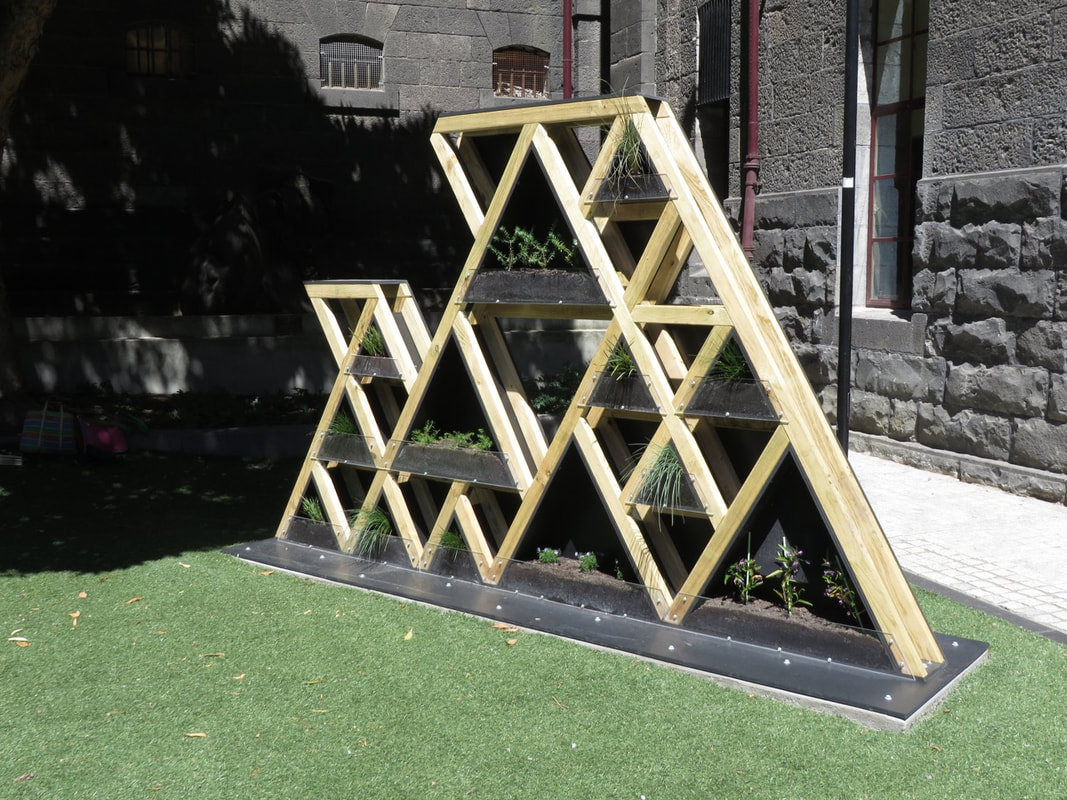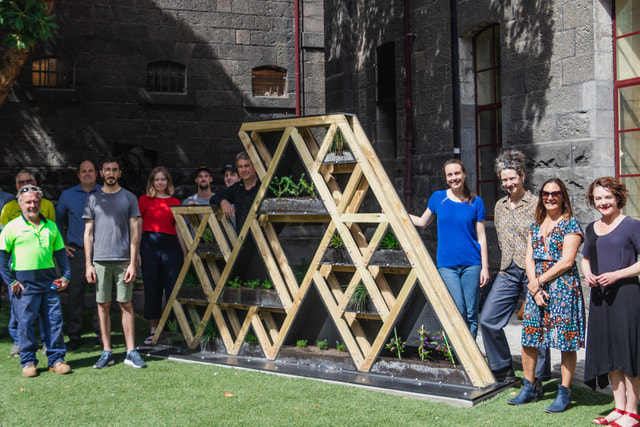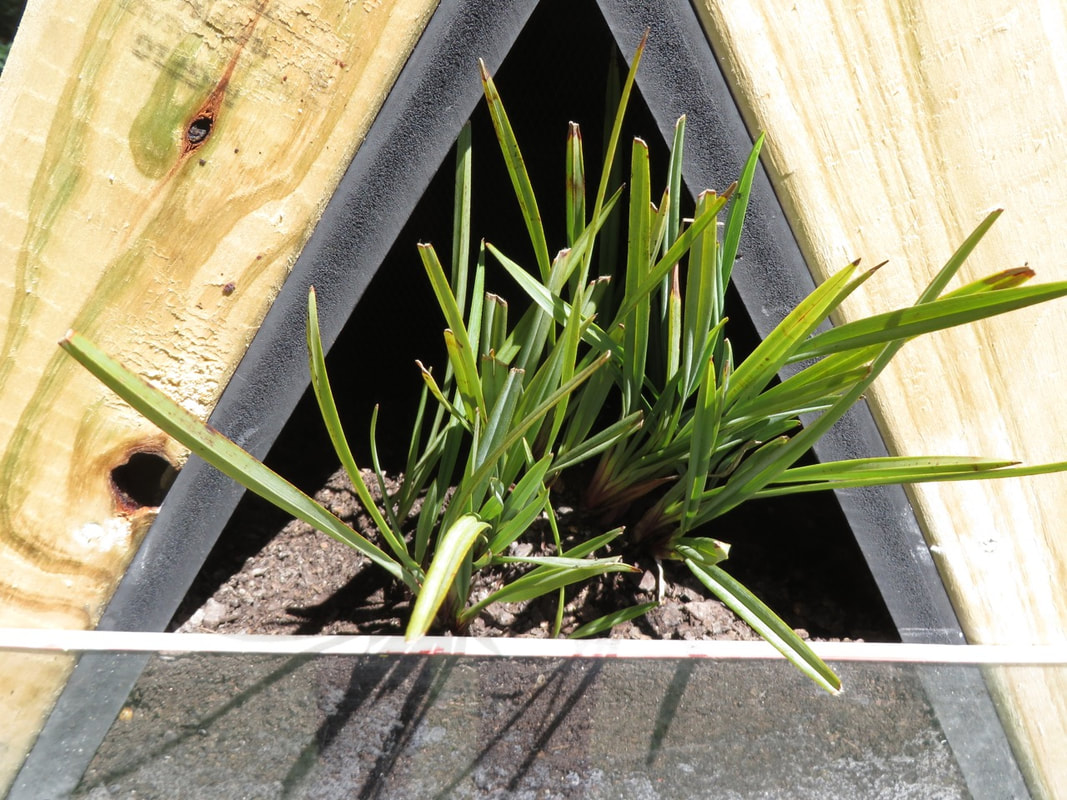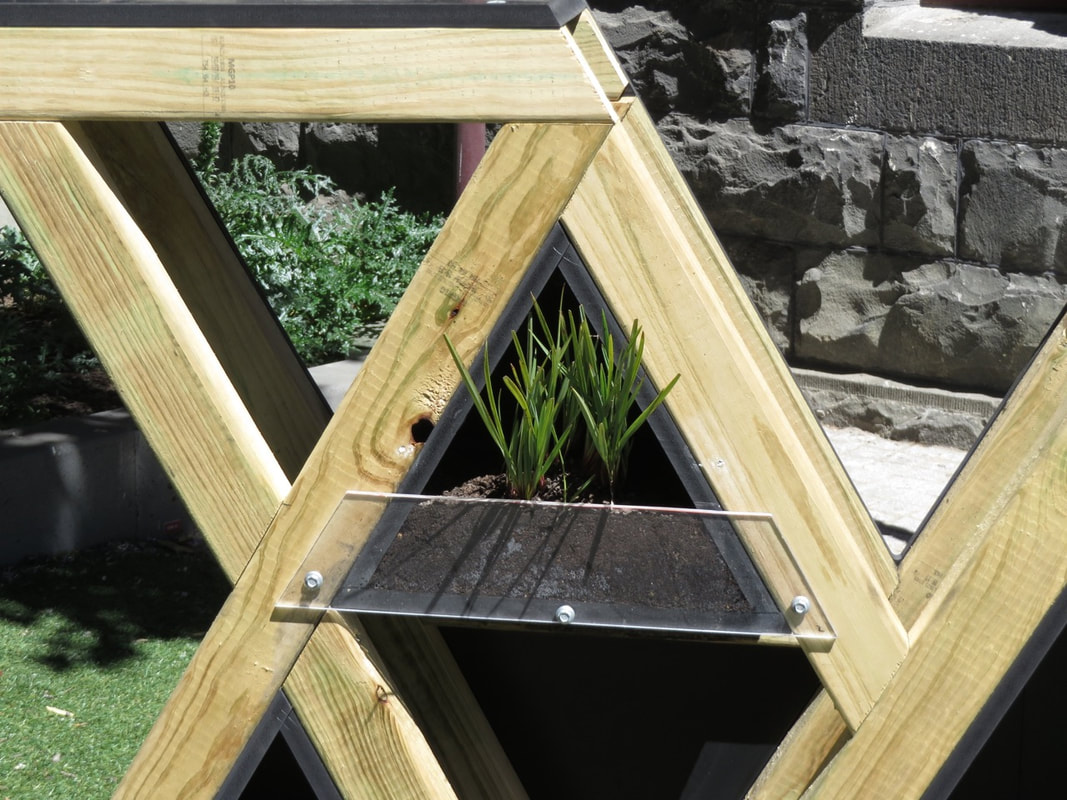|
CATHERINE CLOVER ARTIST
|
Fielding (2016-2019) Fielding is a project that forms the creative sonic component of a larger science project funded by an ARC Linkage Grant 'Designing Green Spaces for Biodiversity and Human Well-Being' conducted by Professor Sarah Bekessy and her team at Sustainability and Urban Planning RMIT University, Melbourne. Main website here Artists Catherine Clover and Jordan Lacey Coordinator Kim de Kretser As an art-science collaboration, Fielding concerns the role of sound in the greening of urban spaces and how this can impact the well-being of people, animals and plants in the urban environment. With a focus on biodiversity and what specific characteristics might constitute a beneficial biodiversity in cities, this project explores how sound and urban greening can work together to help in the design, development and planning of our future cities. Situated at RMIT University’s city campus in the Sunken Courtyard, artists, scientists, landscape designers, sound and interactive designers have come together to create a biodiverse and sonic green structure. The structure is filled with a variety of plants indigenous to Melbourne using an experimental plot concept conceived by the scientists, designed in collaboration with landscape architecture students, and realized by Programmed management services. The individual sounds can be heard through three speakers embedded in the structure. We conceived of the sound for this project via the concept of ‘broken ecologies’. Rather than looking back or trying to emulate a kind of speculative pristine wilderness that may or may not have once existed, broken ecologies work with what we have now, embracing the maladaptive, mixed and complex conditions that we have in our cities today. Utilising terms from soundscape ecology (defined by Barry Truax as the ‘study of the effects of the acoustic environment on the physical responses or behavior of those living in it’) the sources of sound include the geophonic (geological sound including wind, water, earthquakes, volcanoes), the biophonic (biological sound such as animals, birds, insects, plants, trees) and the anthropophonic (human sound in all its varieties). In the urban environment there is overlap between these categories. Jordan and I include our own audio works in the project as well as audio from nine contributors. While some of the recordings are experimental compositions, all utilize or engage with the field recording tradition in some way. This tradition originates from wildlife sound, which is a location-specific recording of wildlife in place. Field recordings focus on specific sounds but they also describe spatial information and atmosphere resulting in a powerful impression of ‘being there’. In traditional approaches to field recording the recordist is sonically absent: s/he attempts to be inaudible, literally silent and undetected, or edited out during processing. This characteristic has come under close critical scrutiny in sonic debate in recent years and is no longer understood to be a viable rendering of place. The recordist has a direct impact: any recording of place is affected by the presence of the recordist and is, therefore, subjective rather than objective. Both directly and indirectly, the audio works in Fielding engage with this critique. Fielding is a prototype and the start of an enquiry into the role sound can play in the greening of our cities. The structure is a beginning, a starting point, for the realisation of the concepts propelling the project. Fielding will be monitored throughout its installation and the impact of its existence in the Sunken Courtyard will be observed through human presence and interaction, animal, bird and insect presence and the effects on the plants within the structure. Further detail about this project can be found at this link (laptop/desktop friendly site) |




